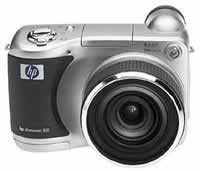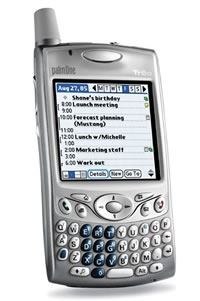 Nokia’s hotly awaited new multimedia smartphone, the Nokia 7710, has started shipping in Europe and Africa.
Nokia’s hotly awaited new multimedia smartphone, the Nokia 7710, has started shipping in Europe and Africa.
Stuffed full of innovative design and smartarse features, the tri-band Nokia 7710 (GSM/GPRS/EGPRS 900/1800/1900), is billed as a blend of smartphone, phone, camcorder and PDA (a “smartcamPDAphone”, if you will).
It’s quite a chunky beast, dominated by a wide, (640×320-pixel) high-quality touch screen with 65,536 colours.
But they’ve stuffed a lot in there: the device includes a full Internet browser (with Flash6 support), an integrated music player with stereo audio, video playback, streaming and recording, a megapixel camera (1152×864 pixels) with 2x digital zoom and FM radio with Visual Radio client.
There’s up to 90 MB internal memory available to users, and its memory slot can accommodate anything up to a 1 GB MultiMediaCard (MMC).
Naturally, such a smartypants device comes with an extensive suite of personal information management software, with support for real-time push email, an antivirus and a VPN client.
 Depending on the sales package, some mobile media applications and services will be pre-installed on the 128 MB MMC, including Mobipocket Reader. This e-book reading application, already popular on Palm/Pocket PC platforms, gives the user access to thousands of titles including current bestsellers.
Depending on the sales package, some mobile media applications and services will be pre-installed on the 128 MB MMC, including Mobipocket Reader. This e-book reading application, already popular on Palm/Pocket PC platforms, gives the user access to thousands of titles including current bestsellers.
Bloggers are supported by Nokia’s Weblogging mobile feature. This lets users instantly publish their (sick bucket please) “life experiences” on the Web, adding pictures and text from their Nokia with ease.
The Nokia 7710 runs on top of Symbian OS with handwriting recognition and pen input. The connectivity options for the Nokia 7710 include a Pop-Port connector with USB and Bluetooth wireless technology for data transfer and PC synchronization.
With other applications available from third party developers (such as Time Out City Guides and the powerful WorldMate weather/traveller program), this sees Nokia shoving their size nines into the competitive world of PDA/smartphones.
It’s a fantastic package, but we will wait and see how it competes with the highly-rated Palm Treo 650 smartphone, which is expected to be released in the UK shortly.
 HP is making an interesting move in the digital camera market. The company’s latest technical wizardry is a system in which digital cameras could be equipped with circuits that could be remotely triggered to blur the face of those who don’t want to have their photo taken.
HP is making an interesting move in the digital camera market. The company’s latest technical wizardry is a system in which digital cameras could be equipped with circuits that could be remotely triggered to blur the face of those who don’t want to have their photo taken. Aura Communications has announced the first samples of its LibertyLink LL888 system-on-chip, for enabling high-quality wireless voice and stereo audio. The chip provides wireless stereo headphone capability for MP3 players, portable DVD players and audio-capable mobile phones – or indeed virtually any portable product where digital audio performance must be coupled with long battery life and low cost. The technology was previewed in ‘real life’ earlier his year by Creative Technology, whose wireless-enabled Zen Micro MP3 player is based on the LibertyLink LL888 chip.
Aura Communications has announced the first samples of its LibertyLink LL888 system-on-chip, for enabling high-quality wireless voice and stereo audio. The chip provides wireless stereo headphone capability for MP3 players, portable DVD players and audio-capable mobile phones – or indeed virtually any portable product where digital audio performance must be coupled with long battery life and low cost. The technology was previewed in ‘real life’ earlier his year by Creative Technology, whose wireless-enabled Zen Micro MP3 player is based on the LibertyLink LL888 chip. The all-time classic Nokia game, Snake, has now hit their gaming platform, the N-Gage. Best of all it’s free to download.
The all-time classic Nokia game, Snake, has now hit their gaming platform, the N-Gage. Best of all it’s free to download. A finer, mellow blend of phone and PDA, PalmOne launched the Treo 650 in the US yesterday. There are changes on the outside and changes on the inside – some cosmetic, some ergonomic, and some fundamentally technical. I’d be happy to ditch my current phone if I won this in a raffle!
A finer, mellow blend of phone and PDA, PalmOne launched the Treo 650 in the US yesterday. There are changes on the outside and changes on the inside – some cosmetic, some ergonomic, and some fundamentally technical. I’d be happy to ditch my current phone if I won this in a raffle!